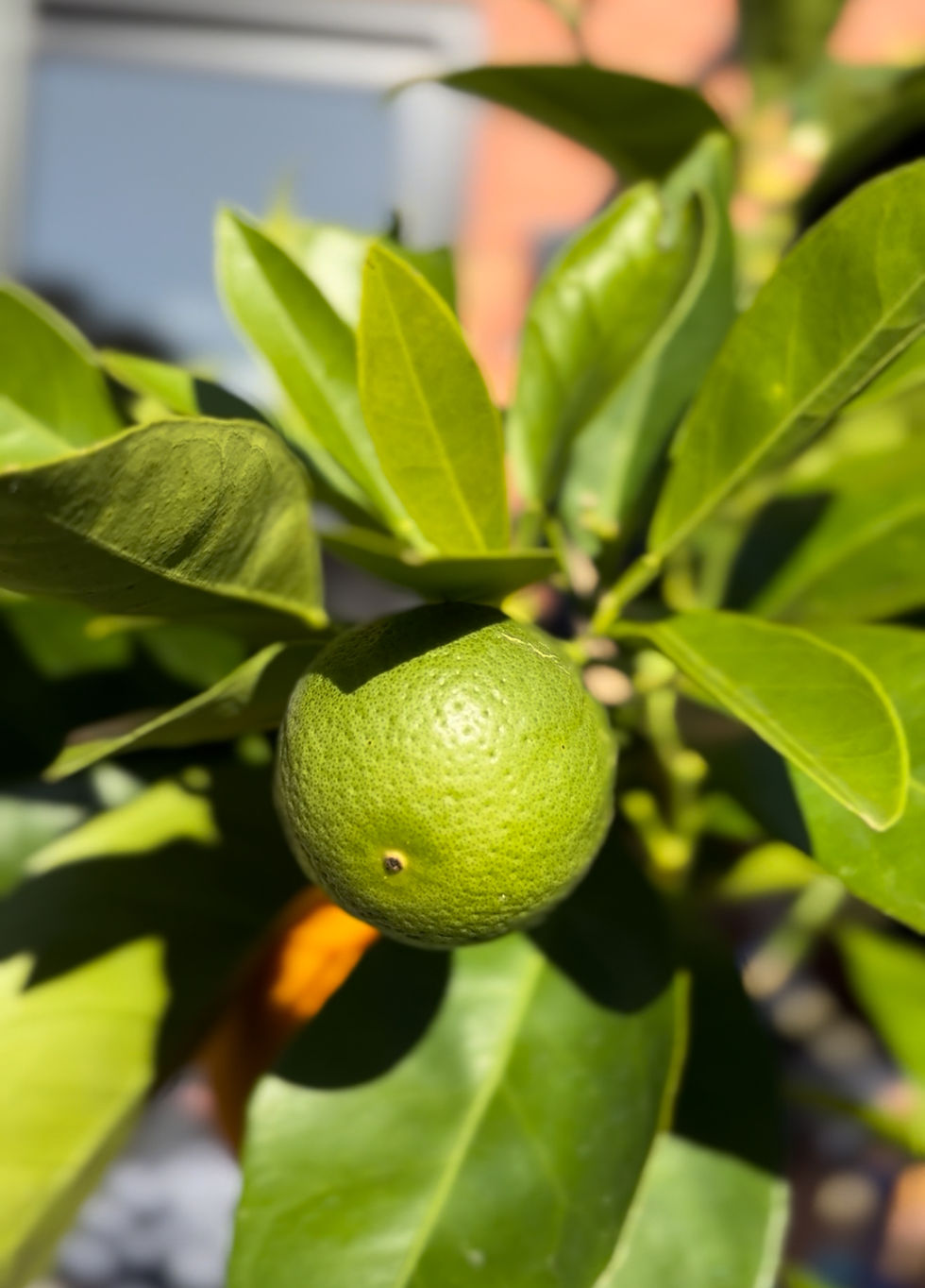Let's get ZESTY!
- Dylan Bartholomew

- Jun 4
- 4 min read
Let’s get ZESTY; it’s time to get those Citrus in the ground, as the winter creeps in bit by bit. Sounds a little counterintuitive, as with strawberries, but citrus are a commitment. They aren’t a one night stand, you’ll likely wake up by their side for years to come, and the day that relationship should start should be in June, as the winter nights grow longer. Presently I am growing my citrus in pots to keep them in a place I can transplant at a later date when I am FINALLY able to purchase my own land, however in the mean time I am development living in the city, and therefore want to protect my plants.

The last citrus I obtained was a Blood orange, and last week I got my first fruit off it. $55 for a single orange to date feels like a crazy high expense, but I am certain we will be getting more and more in the coming years, what with end trimming to dense and topiary the foliage, and with the sheer amount of buds we were able to grow this last season. Sadly with how windy it is here I fear there is no perfect spot to grow it however, and it may be hard to get a good yield with the wind biting as it does. That leads me to my first tip. Citrus are usually seen as fairly hardy plants, what with surviving anything, and their literal acid production, but bare in mind that survival is not thrive-al... that doesn't quite work. The wind will be as much a detriment to the tree as overly moist soils (or too dry), as it will get in there and destroy the buds before they can be pollinated in their formative years.
A good way to get an Urban orchard is to start with some of the smaller citrus, as a lot of people love to run in with apples, pears and banana, and decimate the site for future smaller bush growing fruits, such as lemons, limes, mandarins and many types of orange. Without a clear understanding of their spread it's easy to make a space too sparse, and therefore limit the area you have access to sunlight in, and ruin your rotation. Patience is key here, because it does take a few years for these things to mature, and unfortunately that does mean you will have to legitimately wait a few years. There is no shortcut to biology, and as your (ENTER PATERNAL FIGURE NAME) used to say, patience IS a virtue.

Personally, I'm not sure I will have space for a true orchard or Urban orchard for many many years, but I do have the benefit of my design experience here to lean on. Many years ago now I was approached by a lovely lady who was wanting to divide up her space between usable and beautiful (I am aware the 2 can go hand in hand, but bare with me for the metaphor here), so asked me for a series of fruiting trees that would grow towards the boundaries of her site, with a couple closer in to add volume, interest, and provide screening. During the design phases I felt quite out of touch with how the fruit trees would grow, because we had no references for the area, and we had to install them all at once. As much as I love working with landscapers, these details often go amiss there, such as the patience one must have for fruiting trees, and they had installed rather small trees all in one fell sweep. Back then we weren't Project Managing as we do now, and the client felt somewhat robbed of her fruit trees, stating that she expected them to be bigger, faster, and produce a lot more. It was strangely difficult to explain that with those massive fruit trees towards the boundary they would take many years to grow to the 4-5 meters she expected, and the citrus towards the center wouldn't be massively over producing for a few seasons at least. Take that as you will, but I take it as a great lesson that when we are considering our Orchards, we have to take our time to make sure we get it right, and also understand the needs of our plants.
I am sure I have scared away a bunch of you now, so here is the good news: Citrus are there for life, and can be your best friends in years of drought and blight. They provide amazing screening when placed correctly, love a good container home, and are timeless. If you want cottage themes, pop some salvias and rosemary's nearby, but if you want a modern contemporary garden topiary them in a concrete planter with a warm up light and some dichondra silver falls.
Let us know how you get on with your citrus below, or ask us for some consultation or designs! We are always happy to help!

Comments